| Artix 7 based drum computer | |||||||||||||||||||||||||||||||||||||||||||||||||||||||||||||||||||||||||||||||||||||||||||||||||||||||||||||||||||||||||||||||||||||||||||||||||||||||||||||||||||||||||||||||||||||||||||||||||||||||||||||||||||||||||||||||||||||||||||||||||||||||||||||||||||||||||||||||||||||||||||||||||||||||||||||||||||||||||||||||||||||||||||||||||||||||||||||||||||||||||||||||||||||||||||||||||||||||||||||||||||||||||||||||||||||||||||||||||||||||||||||||||||||||||||||||||||||||||||||||||||||||||||||||||||||||||||
|
256 oscillators 64 voices 128 midi channels 768 kHz Audio Generation 192 kHz Audio DSP |
A complete drum computer in VHDL This page shows the current version of my drum computer. For technical details regarding VHDL and the former base board see the article Spartan 6 drum computer. For this new version, a current Artix 7 FPGA is used. Here is a comparison between Spartan6 and Artix7 resources and the resulting sound / video options: The largest Spartan 6 FPGA is the type LX150 which has about 1,4 and 3,0 time more resources (see green value) than the LX75 I I used in the Tenz-FPGA System. But the largest Artix7 FPGA available has about 2,0 to 5,6 times more resources and also accepts higher speeds. Furthermore it is freely programmable with either ISE or Vivado, while with ISE the LX75 was the biggest freely programmable FPGA. So the Artix is the choice of the day.
Artix 7 Test-System . 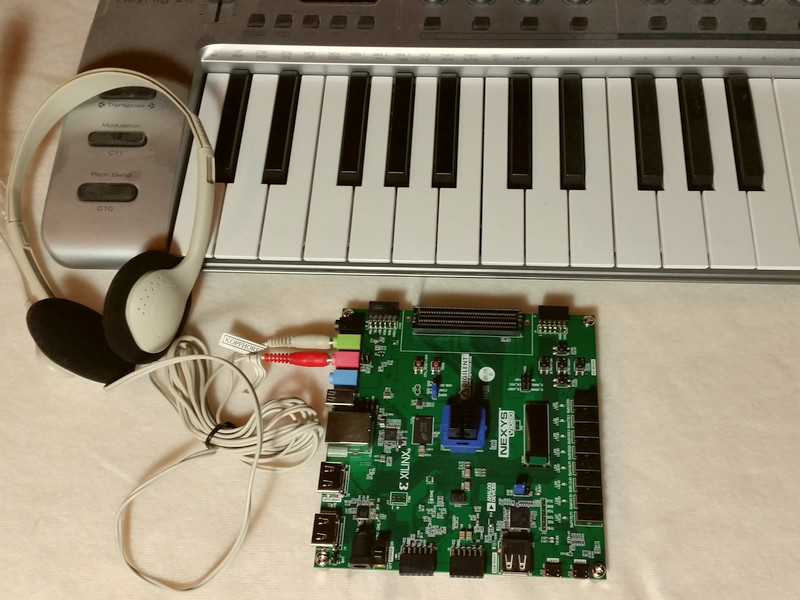 Digilent Nexys FPGA Test PCB Artix 7 FPGA System . 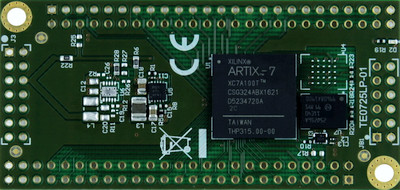 An Artix 7 board from Trenz Electronic in Germany is used for sound synthesis and video generation. 2 PS/2 ports (mouse + keyboard) are available for graphics and synthesis control. Also a MIDI-controller shall be attached: The DIY-MIDI-Controller works with 4x230kBaud, which is about 25 times faster than normal MIDI. See the MIDI 2000 page for details about the MIDI I am using. Drum Computer Front To control the FPGA directly most of the functions can be accessed by internal rotary encoders. Here no LED feedback is used anymore but the values are represented on a SXVGA real time output. There is a drum computer GUI as well as a GUI directly showing the knob's positions. A modified screen of the front plate is used for this. In the PC GUI, oscilloscopes, 3D placer and voice mix ratios are displayed using GUI-Parts of the Pyratone Synthesis Controller. 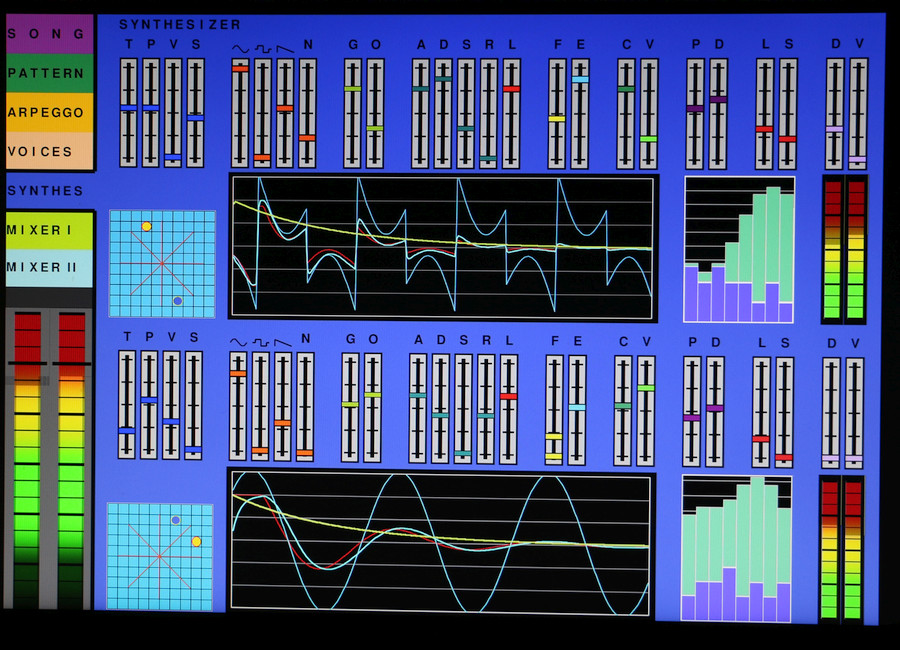 Drum Computer PC GUI - Synthesis Section 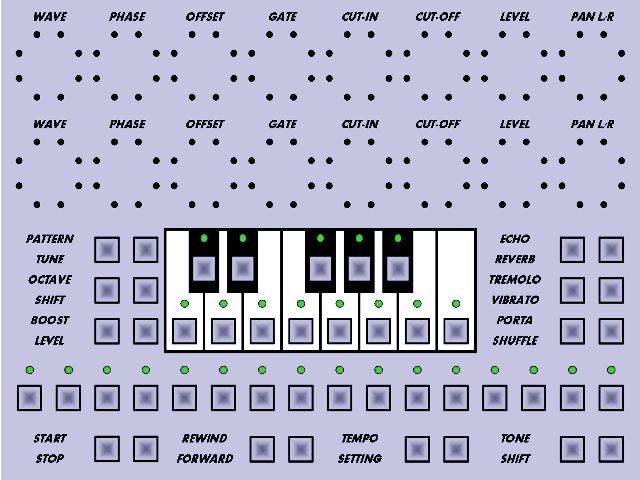 Drum Computer knob representation page, now with smaller keyboard but more knobs than in version 1. It has a 16 step sequencer for each channel and individual tone control for tuning the sounds in real time. As an example bass drums and toms can be configured with the right frequency to met the melody's tuning perfectly. Song and pattern programming is performed via GUI or PC upload. The front skin of the drum computer controls an 8x16 step sequencer and has individual tone control for each step. Thus bass drums and toms can be setup with the propper frequency to met the melody's tun. 64 tracks are available altogether. Direct access is given to boost, loudness and parameters like D+ADSR+L. 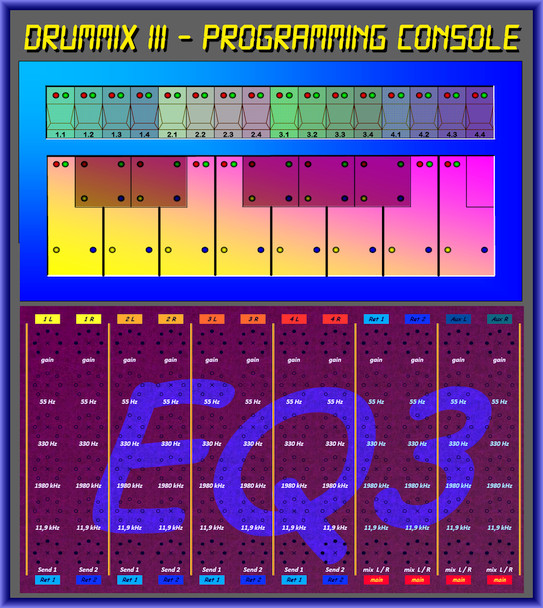 Drum Computer Sound Programming Console / PC-GUI Construction Details 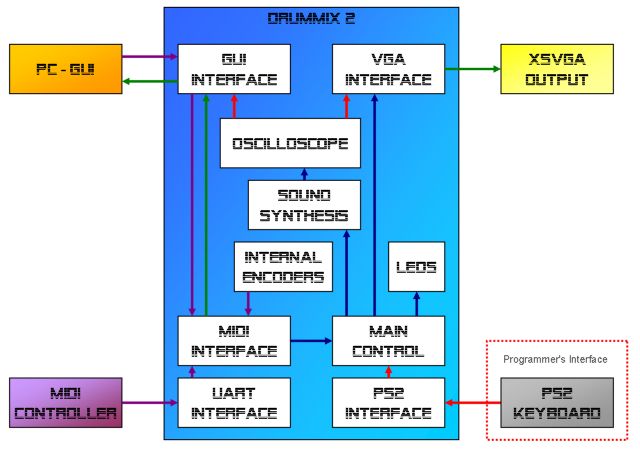 Data Flow and interconnections of the drum computer.  A modified USB-keyboard is used to control the channel mixer with SOLO (yellow), MUTE (light blue), LOUDNESS (green+red up/down). Keymapping is performed in the FPGA interface. 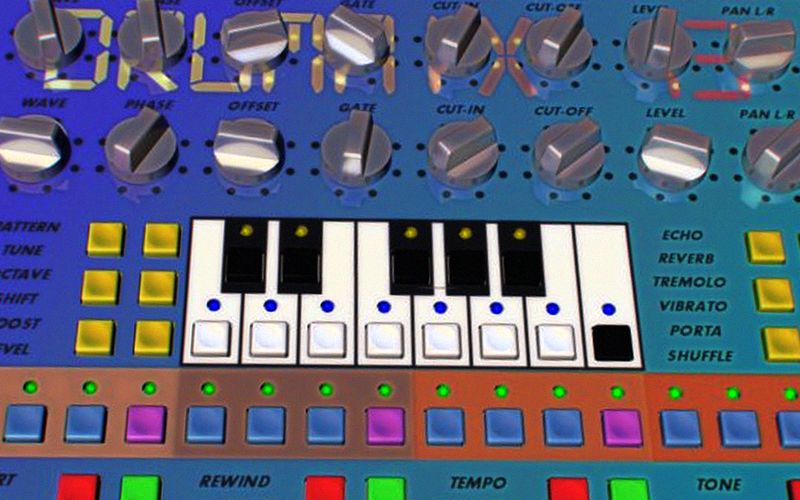 Current realization of the physical front face of the adrum computer using Mentor knobs for the encoders: Listen to a demo song of the DRUMMIX 2: Demo Dance and House Mix Demo Beat Resampler Mix The Drum Computer shows also internal settings and values like wave synthesis and levels via a virtual MIDI knob matrix: 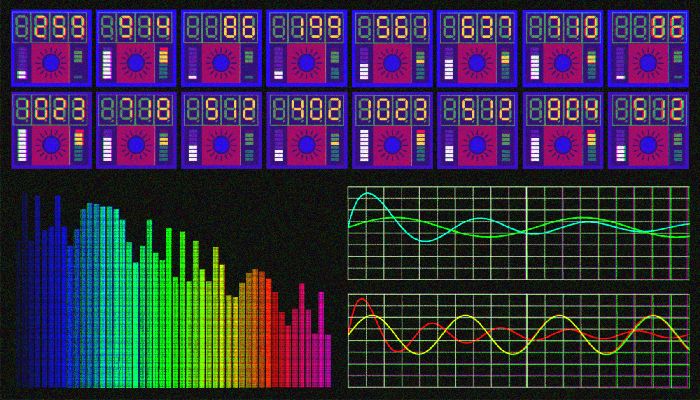 Screen Shot of the sound configuration menu with digital numbers on VGA Screen Shot of the FPGA-VGA-output for MIDI Controller 15 Platform Design The drum computer will become a part of the forthcoming Pyratone Platform to operate self standing and in cooperation with an additional sound synthesis module as well as adjacent DSP module for sound processing, see www.pyratone.de.  Up to three Artix Modules can be plugged into the new PCB Also USB is implemented to attach common controllers: Drum Computer with USB MIDI input See the former version of the drum computer here: Cyclone 4 - drum computer with virtual console See the first version of the drum computer in VHDL here: Spartan 6 Drum Computer with virtual console |
||||||||||||||||||||||||||||||||||||||||||||||||||||||||||||||||||||||||||||||||||||||||||||||||||||||||||||||||||||||||||||||||||||||||||||||||||||||||||||||||||||||||||||||||||||||||||||||||||||||||||||||||||||||||||||||||||||||||||||||||||||||||||||||||||||||||||||||||||||||||||||||||||||||||||||||||||||||||||||||||||||||||||||||||||||||||||||||||||||||||||||||||||||||||||||||||||||||||||||||||||||||||||||||||||||||||||||||||||||||||||||||||||||||||||||||||||||||||||||||||||||||||||||||||||||||||||
|
|
|||||||||||||||||||||||||||||||||||||||||||||||||||||||||||||||||||||||||||||||||||||||||||||||||||||||||||||||||||||||||||||||||||||||||||||||||||||||||||||||||||||||||||||||||||||||||||||||||||||||||||||||||||||||||||||||||||||||||||||||||||||||||||||||||||||||||||||||||||||||||||||||||||||||||||||||||||||||||||||||||||||||||||||||||||||||||||||||||||||||||||||||||||||||||||||||||||||||||||||||||||||||||||||||||||||||||||||||||||||||||||||||||||||||||||||||||||||||||||||||||||||||||||||||||||||||||||
© Dipl.-Ing. Jürgen Schuhmacher 2016